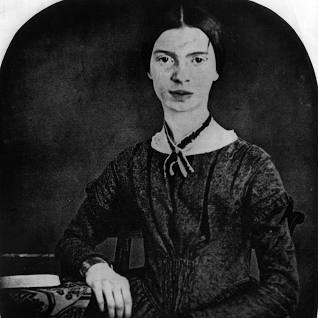Analyze the use of metaphor in Emily Dickinson’s Because I could not stop for Death
Emily Dickinson, one of the most influential American poets of the 19th century, crafted a vast collection of thought-provoking and introspective poems. Among her works, “Because I could not stop for Death” stands out as a powerful exploration of mortality and the passage of time.
Use Metaphor in Because I could not stop for Death:-In this essay, we will delve into the use of metaphor in Dickinson’s poem, examining how she employs metaphorical language to convey profound insights about life, death, and the human experience.
1. The Metaphorical Journey:Death as a Gentleman Caller Dickinson opens the poem by introducing Death as a metaphorical figure, personifying it as a gentleman caller who takes the speaker on a carriage ride. The poet presents Death as a character who patiently waits for her, emphasizing the inevitability of mortality and the notion that death is an integral part of life’s journey.
Use Metaphor in Because I could not stop for Death:-The extended metaphor of the carriage ride portrays life as a passage, highlighting the idea that each stage of life leads inexorably towards death.
Also Read:-
- Analyze the use of symbolism in Joseph Conrad’s Heart of Darkness
- Salman Rushdie use concept of identity in Midnight’s Children
- Discuss the theme of gender roles in Charlotte Perkins Gilman’s The Yellow Wallpaper
- Analyze the use of metaphor in Langston Hughes Mother to Son
2. The Immortality of the Soul: The House as the Final Destination As the speaker and Death continue their journey, they pass various scenes that represent different stages of life. Eventually, they arrive at a house, which serves as a metaphor for the speaker’s final resting place or the afterlife. However, instead of perceiving death as an end, the poem suggests the immortality of the soul. By depicting the house as a symbolic refuge, Dickinson implies that even though physical existence may cease, the spirit lives on.
3. The Slow Pace of Time: Seasons and the Setting Sun Another powerful metaphor employed in Dickinson’s poem is the representation of the passage of time. Through the subtle inclusion of seasonal imagery, the poet conveys the gradual progression from youth to old age.
Use Metaphor in Because I could not stop for Death:-The lines, “We passed the Fields of Gazing Grain,” evoke an image of ripening crops, symbolizing the fullness of life’s potential. Furthermore, the setting sun in the final part implies the end of life’s journey, where the speaker reaches the twilight of existence, emphasizing the limited nature of time.
4. The Frozen Perception of Time: Time as an Eternal Realm While Dickinson portrays the passage of time through seasonal references, she also introduces a contrasting perspective of time as an eternal realm. The line “Since then ’tis Centuries; but each / Feels shorter than the Day” conveys a paradoxical experience where time stretches out endlessly yet feels compressed.
Use Metaphor in Because I could not stop for Death:-This paradox suggests that our perception of time becomes distorted when confronted with the vastness of eternity, a concept that can be difficult for the human mind to comprehend.
5. Death as a Companion: The Final Metaphorical Insight Towards the end of the poem, Dickinson reveals that the speaker has been accompanied by Immortality and Death throughout their journey. Here, the metaphorical exploration takes an intriguing turn, suggesting that death is not a solitary occurrence but a constant companion that walks alongside us from the moment we are born.
Use Metaphor in Because I could not stop for Death:-By positioning Immortality and Death as passengers, Dickinson implies that these forces are intertwined and that our mortality is inseparable from our enduring legacy.
Because I could not stop for Death “Summary”
“Because I could not stop for Death” is a renowned poem written by Emily Dickinson, one of America’s most celebrated and enigmatic poets. First published in 1890, the poem explores the theme of mortality and the speaker’s contemplation of death’s inevitability. Through vivid imagery, symbolic representations, and a reflective tone, Dickinson delves into the journey of the soul as it transitions from life to death.
Use Metaphor in Because I could not stop for Death:-The poem opens with the famous line, “Because I could not stop for Death – / He kindly stopped for me.” The speaker personifies Death as a courteous gentleman who arrives unexpectedly to accompany her on a carriage ride. The use of the word “kindly” suggests that the speaker views death not as something to be feared, but rather as a companion who guides her through the transition.
As the carriage progresses, the speaker observes the passing scenes: “We slowly drove – He knew no haste.” Time seems to stand still as Death and the speaker travel leisurely through the landscape, reflecting the idea that death is an eternal state. The carriage passes by various images representing different stages of life, such as a school, a field of grain, and a setting sun. These symbols signify the stages of childhood, maturity, and the end of life.
Use Metaphor in Because I could not stop for Death:-The speaker then notices a grave, symbolizing the final resting place. However, instead of experiencing fear or despair, the speaker views the grave as a peaceful and serene destination. She describes the grave as a “House” where she will dwell for eternity, suggesting a sense of acceptance and tranquility towards death.
The second part of the poem presents a shift in perspective. The speaker moves from describing her journey with Death to reflecting on her past life. She describes how her initial reluctance to stop for Death was due to her preoccupation with the earthly realm. The reference to the speaker’s “labor” and “leisure” implies the busyness and distractions of life, which often hinder contemplation of mortality.
Use Metaphor in Because I could not stop for Death:-The third part focuses on the passage of time and the speaker’s transition from life to eternity. The phrase “Since then – ’tis Centuries – and yet / Feels shorter than the Day” emphasizes the timelessness of the afterlife. The speaker’s perception of time becomes distorted as she realizes that the centuries in eternity seem shorter than a single day in earthly existence. This paradoxical concept underscores the eternal nature of the soul beyond death.
In the fourth part, the speaker’s journey reaches its final destination, where she encounters immortality. The “Horses’ Heads” symbolize the divine forces that guide her to the afterlife. The speaker notes that even though centuries have passed, she is still dressed for her wedding day, indicating that she has transcended the limitations of time and space.
Use Metaphor in Because I could not stop for Death:-The poem concludes with the speaker’s reflection on her current state. She states that her realizations about life and death have transformed her perspective. She views the mundane aspects of life, such as labor, leisure, and the passing of time, as transient and insignificant compared to the eternal existence that awaits her. The poem’s final lines, “For His Civility – / We passed the School, where Children strove,” suggest that the speaker has moved beyond the mortal realm and attained a higher level of consciousness.
In “Because I could not stop for Death,” Emily Dickinson presents a thought-provoking exploration of mortality and the journey of the soul. Through rich imagery and symbolic representations, she challenges conventional views of death, portraying it as a companionate force that guides individuals to their eternal resting place. The poem invites readers to contemplate the nature of existence, the fleeting nature of life, and the enduring legacy of the human soul.
Conclusion
Emily Dickinson’s poem “Because I could not stop for Death” showcases her adept use of metaphor to explore profound themes of mortality and the passage of time. Through the metaphorical journey of Death as a gentleman caller, the poem highlights the inevitability of death as an integral part of life’s journey. The metaphor of the house as the final destination suggests the immortality of the soul, implying that while physical existence may cease, the spirit lives on. Additionally, the seasonal imagery and the setting sun symbolize the gradual progression of time and the limited nature of human existence.
Dickinson also introduces the paradoxical concept of time as both eternal and compressed, challenging our perception of its passage. Finally, the poem reveals that death is not a solitary event but a constant companion from birth, intertwined with immortality. Overall, Dickinson’s masterful use of metaphor in this poem invites readers to contemplate the interconnectedness of life and death, urging us to confront our mortality and appreciate the fleeting nature of our existence.
FAQ.
Q. Who is the speaker in the poem?
Ans. The speaker in the poem is an unnamed individual who reflects on her journey with Death. Although we do not have specific details about her identity, she serves as the voice through which Dickinson explores the themes of mortality and the afterlife.
Q. What is the central theme of the poem?
Ans. The central theme of the poem is mortality and the speaker’s contemplation of death. It explores the idea of death as an inevitable and inescapable companion on the journey from life to eternity.
Q. What is the significance of the carriage ride?
Ans. The carriage ride symbolizes the journey from life to death. Death is personified as a gentleman who kindly stops for the speaker. The slow and leisurely pace of the carriage ride emphasizes the notion that death is a gradual and inevitable transition.
Q. What do the different scenes and symbols in the poem represent?
Ans. The scenes and symbols in the poem represent various stages of life. The school symbolizes childhood and education, the field of grain represents maturity and productivity, and the setting sun symbolizes the end of life. These images highlight the passage of time and the different phases individuals experience before reaching the final resting place.

















